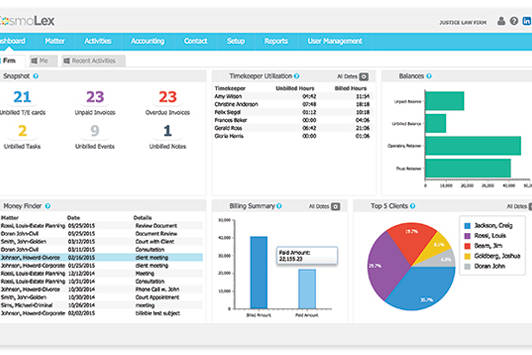How to Track Conversions on Your Website using Google Tag Manager
Google Tag Manager (GTM) is one of the easiest ways to track user actions on your website. It’s simple to set up, no coding is involved (after you’ve installed the GTM code), and it helps you test and troubleshoot your tracking.
This article will include simple steps on how to track a form submission conversion on a basic website with a contact form.
Step 1
- Create a Google Tag Manager account and install the code on your site.
- Go to https://www.google.com/analytics/tag-manager/
- It’s best to use the Google account that you use for all of your Google Products like Gmail, Analytics, Adwords, etc.
- Follow the steps to set up an account and container and install the GTM code on your website. For more details on this, go here.
- After this step, no further website coding is required!
Step 2
- Create a Google Analytics account by visiting https://www.google.com/analytics/.
- Use the same Google account login you used for GTM
- Follow the steps to set up a Google Analytics account, property and view for your website. For more details on this, go here.
Step 3
Now you’re ready for the good stuff.
The steps below outline how to create a Google Analytics (GA) tag within GTM. This is how you will install GA on your website. Now that you have GTM installed on your website, you don’t need to install the code directly onto your site, you will install it via GTM, no coding involved!
- Go to Workspace > Tags > New > Tag Type: Universal Analytics
- Keep track type as “Page View”
- In the Google Analytics Setting dropdown, select “New Variable”
- Add your Google Analytics tracking ID to the field, and name the variable “Google Analytics Settings”
- Save
- Add a trigger by clicking on “Triggering” > All Pages
- Save
- Name the Tag “Universal Analytics”
- Now you can see the Tag you just created in your Tags tab
- In the top right corner click “Submit” > “Publish” to push these changes to your live website.
Pro Tip: It’s very easy to forget to push changes live, so always remember to check that you’ve submitted your changes after you’ve made your modifications within the account and before you exit out of GTM
Step 4
- Create a tag and trigger to configure form submission conversion tracking
- The tag will send the information about the action to Google Analytics, and the trigger will tell the tag when to send that information
- Go to Workspace > Tags > New > Tag Type: Universal Analytics
- Choose track type: “Event”
- You can fill the category, action, label, and value fields with whatever names that you want to use. I like to use a very basic “Form Submission” for the event category. Then, I like to utilize the built-in variables to specify the event action.
- Beside the action field, click on the folder icon to bring up built-in variables. Choose the “Page URL” variable. This will populate the event action with the page URL where the action occurred. This is useful if you have more than one form on your website to see which page the user submitted the form on.
- In the Google Analytics settings dropdown, choose the variable that you created in Step 3 “Google Analytics settings”
- Now to create a trigger
- Choose triggering > click the plus (+) icon in the corner to create a new trigger
- Click Trigger configuration
- Click Form Submission to use the built-in trigger type
- Save
- Name your trigger “Form Submissions”
- This trigger will now activate upon a form submission on any page of your website.
- A quick tip to keep in mind: This broad trigger also activates on search box submissions on your site. To make the trigger more specific, you’ll need to find the ID of the form(s) that you want to track, and click “Some forms” while creating your form submission trigger, choose “Form ID” > “equals” > “your form ID”.
- Now save your tag and name it something like “GA – Form Submission Event Tracking”
Step 5
- Preview your tags and triggers to make sure that they work
- In GTM, click “Preview” in the top right corner. You are now in preview mode, which will give you a debugging window on your website to see if everything works right
- Go to your website homepage. You will see a GTM preview window at the bottom of your screen
- Ensure that your “Universal Analytics” tag has triggered. It should be triggered on all pages, remember?
- Now navigate to a page with your contact form on it and send a test message. Once you’ve sent your message, pay attention to the GTM preview window, is the “GA – Form Submission Event Tracking” triggered after you submit the form? If not, you’ll have to go back to Step 4 and ensure everything is set up correctly. If it works, congrats! You’ve successfully set up conversion tracking in GTM.
- Don’t forget to submit your changes again. In the top right corner of GTM, click “Submit” > “Publish” to push these changes to your live website.
Step 6
- The final step is to see these events in Google Analytics, and track them as goals. This is how you put your tracking to work.
- Within your Google Analytics account and click on Admin > Goals > New Goal
- Choose “Custom” > Name the goal “Form Submissions” > Choose Event type
- Now you will enter the Category that you specified while setting up your Form Submission tag in GTM.
- Pro tip: Remember how you entered the PageURL variable into the action field when setting up your tag in GTM? If you have multiple forms on your site, enter in the page URL in the action field when setting up your goal (the full page URL, ie. http://www.example.com/contact-us) in order to track conversions from a specific page. Then create more goals using the different page URLs in the event action fields.
- If you don’t have multiple forms, you can leave the action field empty
- Save
- Now test it!
- Go to the Real-Time > Conversions tab in Google Analytics, submit another test form submission on your site, and if everything is working properly, you should see a “Form Submission” conversion come through!
Conclusion
Conversion tracking is highly recommended on every site, even if it’s a relatively simple setup like tracking form submissions on a contact page
It is beneficial to know exactly how many people are converting and where they are coming from to understand how your audience is interacting with your business online
It’s also a great way to track your marketing efforts, whether through Google Adwords, Adwords Express, Facebook, Twitter, LinkedIn, or any other platform. You will be able to see what referral sources are bringing in the leads and adjust your marketing accordingly
Even if you don’t do any paid marketing, it’s helpful to know if your Facebook or Instagram posts are driving leads, or maybe a partner website or directory that you’re listed in is driving leads. All these great insights can help you drive more leads and help grow your business.
Dennis Dimka
As the founder and CEO of Uptime Legal Systems, I've had the privilege of guiding our company to become a leading provider of technology services for law firms.
Our growth, both organic and through strategic acquisitions, has enabled us to offer a diverse range of services, tailored to the evolving needs of the legal industry.
Being recognized as an Ernst & Young Entrepreneur of the Year Finalist and seeing Uptime Legal ranked among the Inc. 5000 list of fastest-growing private companies in America for eight consecutive years are testaments to our team's dedication.
At Uptime Legal, we strive to continuously innovate and adapt in the rapidly evolving legal tech landscape, ensuring that law firms have access to the most advanced and reliable technology solutions.
Related Posts
March 8, 2024
Keyword Research for Lawyers: Choosing the Right Keywords to Get More Traffic and Leads
The ultimate guide to keyword research…
February 15, 2024
How Marketing Helps Law Firms Succeed: Strategies and Benefits
Explore the role of marketing in law…
January 30, 2024
SEO for Lawyers: A Beginner’s Guide (With 50+ Examples)
SEO for Lawyers is one of the best ways…
January 22, 2024
Why Should Businesses Optimize for Local SEO?
Discover which industries benefit most…
January 5, 2024
3 Pillars of Local SEO for Law Firms: Distance, Relevance, Prominence
Learn about the three most important…
December 28, 2023
The Lawyer’s Guide to Building Strong Local Backlinks
Learn about the importance of building…
December 20, 2023
SEO Myths and Misconceptions in Legal Marketing
Master SEO for law firms. Learn what…
December 19, 2023
Creating Effective Local Landing Pages for Law Firms
Master local landing pages for law…
December 14, 2023
Reputation Management for Lawyers: The Ultimate Guide
Master reputation management for…
December 7, 2023
Navigating Google’s Map Pack: A Law Firm’s Guide to Local SEO
Learn about Google's Map Pack, why your…
December 1, 2023
Google Ads for Lawyers: Tips to Generate More Qualified Leads
Learn the importance of Google Ads for…
November 22, 2023
Law Firm Marketing: A Complete Guide (with 24 Strategies)
Here's everything you need to know to…
November 17, 2023
PPC for Lawyers: An Expert Guide to Mastering Paid Search
Learn everything you need to know about…
October 24, 2023
Best Law Firm Website Builders: Set Your Practice Up for Success
Learn how to elevate your firm's online…
October 18, 2023
Local SEO for Lawyers: A Guide to Winning More Local Leads
Learn about the importance of local SEO…
October 6, 2023
Video Marketing for Lawyers: 13 Techniques for Attracting Clients
Learn everything you need to know about…
July 26, 2023
ChatGPT for Lawyers: Balancing AI and Legal Work
AI and ChatGPT are taking the world by…
June 28, 2023
How to Grow a Law Firm: Essential Strategies for Success
Uncover essential steps on how to grow…
June 14, 2023
Radio Advertising for Lawyers: What You Need to Know
Learn everything you need to know about…
May 30, 2023
SEO for Personal Injury Law Firms: A Complete Guide
Learn all about the power of personal…
May 15, 2023
LinkedIn for Lawyers: 11 Tips to Create a Stand-Out Profile
Find out why all lawyers should be…
May 15, 2023
Email Marketing for Law Firms: How to Attract & Retain More Clients with Email
Learn everything you need to know to…
May 15, 2023
Keyboard Shortcuts for Legal Symbols: How to Enter the Section Symbol (And More) Into Your Documents
Looking to draft your legal documents…
May 3, 2023
Law Firm Branding: How to Build a Strong Brand (With Examples)
Learn how to build a strong brand that…
May 1, 2023
Remarketing Ads for Lawyers: How to Stay Top-of-Mind and Drive Conversions
Learn all about remarketing ads for…
April 26, 2023
Content Marketing for Law Firms: The Ultimate Guide
Learn everything you need to know about…
April 20, 2023
Mastering Online Marketing: A Comprehensive Guide for Lawyers
Learn all about online marketing for…
April 5, 2023
Internal Links for Law Firm SEO: A Comprehensive Guide
Learn everything you need to know about…
April 4, 2023
Criminal Defense Law Firm Website Statistics (100 Firms Analyzed)
We analyzed the top 100 criminal…
March 30, 2023
9 Types of Content You Should Have on Your Law Firm’s Website
Content is important for law firm…
March 29, 2023
5 Places Your Clients are Leaving Reviews Online
Learn about the importance of reviews…
March 28, 2023
Negative Keywords for Lawyers: Mastering Google Ads for Maximum ROI
Learn everything you need to know about…
March 23, 2023
Local Keyword Research for Lawyers: A How-To Guide
Learn all about the importance of local…
March 22, 2023
Law Firm Website Design and Development: A How-To Guide
The ultimate guide to law firm website…
March 21, 2023
What Is Search Intent and Why Does It Matter for Law Firm SEO?
Learn all about search intent for law…
March 17, 2023
How to Improve Your Law Firm’s Online Presence
Learn everything you need to know about…
March 10, 2023
How SEO Compares to Other Law Firm Marketing Strategies
Learn about the importance of SEO for…
March 7, 2023
21 Ways to Attract More Backlinks to Your Law Firm’s Website
Learn about the importance of backlinks…
February 16, 2023
Local Citations for Law Firms: Maximizing Your Online Visibility
Learn what you need to know about local…
February 10, 2023
How to Get More Google Reviews for Your Law Firm
Get more Google reviews for your law…
February 9, 2023
Google Business Profile Optimization for Lawyers: A Guide
Google Business Profile Optimization…
January 31, 2023
Law Firm Marketing Plan: A Step-By-Step Template [Free PDF]
Download a free law firm marketing plan…
January 17, 2023
Local Service Ads for Lawyers: 9 Steps to Guarantee More Quality Leads
Learn everything you need to know about…
January 12, 2023
Lawyer Advertising Rules: What You Need to Know about Law Firm Ads
Advertising is a crucial path of…
January 10, 2023
Live Chat for Law Firms: The Best 15 Live Chat Apps for Attorney Websites
In this article, we review the best 15…
January 4, 2023
Legal Directories: Best Lawyer Directories in 2023
Learn all about legal directories,…
December 15, 2022
Google Business Profile for Lawyers: How to Skyrocket Your Local Search Leads (for Free)
Learn everything you need to know about…
December 6, 2022
Attorney Bio Pages: 13 Ways to Supercharge Your Profile
Learn about the importance of attorney…
November 29, 2022
Advice for New Lawyers: 11 Tips for Aspiring Attorneys
Find the top tips that will help any…
November 28, 2022
Lawyer Statistics: 55 Eye-Opening Stats & Trends for 2023
Find out everything you could ever want…
November 14, 2022
Clio Grow Review: Client Intake and CRM for Lawyers
Learn everything you need to know about…
November 7, 2022
TikTok for Lawyers: How to Grow Your Law Firm Through TikTok Marketing (With Examples)
TikTok for lawyers, while…
September 15, 2022
Law Firm Website Design Cost: How Much Should Your Attorney Website Cost?
Looking to get a new website designed…
September 7, 2022
[Video] 3 Ways to Get More Law Clients: Show Authority, Credibility & Capability
3 ways to get more law clients by…
August 29, 2022
How to Get More Clients for Your Law Firm: A Guide
Looking to start bringing in more leads…
August 4, 2022
Link Building for Lawyers: 13 Strategies to Build Your Link Profile
Learn about the importance of link…
July 6, 2022
15 Top Law Firm Practice Management Software Solutions
Learn what the top 15 law firm practice…
June 16, 2022
Law Firm Newsletter: How to Nurture Leads and Get More Clients
Find out how your law firm could…
June 1, 2022
Law Firm Marketing Budget: How Much Should You Spend on Marketing in 2023?
Wondering how much it costs to market…
May 13, 2022
Blogging for Lawyers: How to Start and Manage a Legal Blog
Learn all about blogging for lawyers,…
May 5, 2022
Lead Generation for Lawyers: How to Generate More Leads
Learn why lead generation for lawyers…
April 4, 2022
SEO for Criminal Defense Lawyers: What You Need to Know
Even criminal defense law firms need to…
April 4, 2022
CosmoLex Review: A Lawyer’s Case Management Test Drive
A comprehensive Cosmolex review for…
April 4, 2022
Law Firm Sales Process: 10 Tips to Convert More Prospects Into Customers
In this article, we will cover 10 tips…
April 4, 2022
What Does Your Font Say About Your Firm? The Best Law Firm Logo Fonts
Fonts go a long way in communicating…
April 4, 2022
How to Leave FindLaw – Escape Their Clutches & Gain Your Freedom
Looking to leave Findlaw? Here's how to…
February 11, 2022
Lawyer Awards: Top National, International, and Local Awards to Apply For
To establish credibility for your law…
January 4, 2022
Avvo Lawyer Marketing Guide: 17 Avvo Marketing Techniques & Tactics
A guide to marketing yourself and your…
December 10, 2021
Facebook Advertising for Lawyers: 17 Zuckerberg-Approved Techniques
17 Facebook advertising techniques that…
December 1, 2021
The Pros and Cons of .lawyer and .law Domain Names
Should you have a .lawyer or .law…
July 23, 2019
Practice Area Power Pages: 21 Tips to Get Your Service Pages to #1 in Google
All law firm's need practice area…














































































































